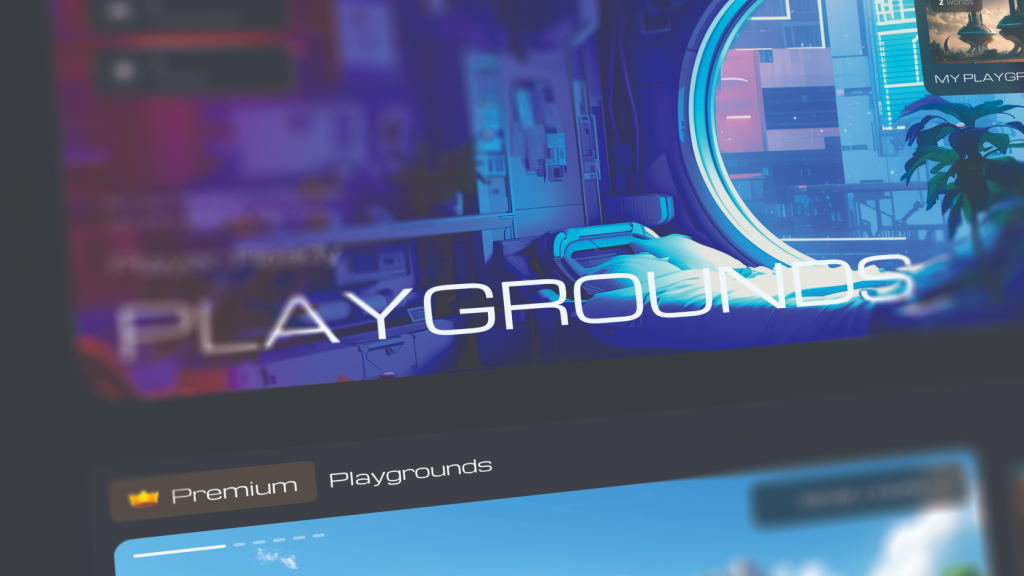Digital ownership and interoperability are key features blockchain enables in games. But web3 is only one of the many technologies supporting the advancements and rapid growth of emerging gaming infrastructure.
Someone who knows this industry well is Aleissia Laidacker, who is head of product at web3 tech company Crucible. Prior to that she was head of developer experience at XR/AR company Magic Leap. Suffice to say, she puts a lot of emphasis on user experience, as we asked her about how Crucible’s web3 tools help game developers and more largely how they will impact the mass adoption of blockchain games.
BlockchainGamer: You’ve plenty of experience in the traditional gaming industry. How is blockchain changing the sector?

Aleissia Laidacker: The gaming industry always embraces new technology. It does this so that it can create new types of games and experiences. Blockchain or web3 technologies are another new avenue for creating new experiences for players.
Blockchain puts a clear emphasis on ownership. And this is exciting. Platforms like Roblox or Fortnite have been hugely successful, in part because of user-generated content. But they’re silos. This means that if you’re a creator, your creations only work in those ‘universes’.
Blockchain takes care of the ownership layer. But where it gets really exciting is when the content is also interoperable. Web3 technology supports that through interoperable systems. This is a huge part of what we’ve been building with Emergence.
Young gamers often started out playing Minecraft, then as they got older, graduated to Roblox and then Fortnite. Web3 allows those players to not only make the switch to different games and gaming platforms but to bring their creations with them and use them across game worlds.
Some talk of web3 as being inevitable to gaming, while others think it will always play a niche role. What are some key factors for mass adoption?
As with any new technology, I think it always comes down to user experience. How do we make this new technology accessible and easy to use? If we think back to the early days of VR, I remember when the Oculus Rift was not only very expensive, but was so bulky, with tons of wires, and you were lucky if your game studio had just 1 headset to build games on. Fast forward 10 years, and now they’re much easier to use, lightweight and at a much lower price point.
Web3 poses similar challenges. Not everyone has a web3 wallet. And the user experience for signing transactions is still very clunky. But there are many who are working on improving that user experience.
There are already some web3 companies, such as Futureverse, our partner, where the idea of a web3 wallet is completely abstracted to the user. The user just needs to login with their social login of choice. But this to me is the biggest hurdle from the past few years, and improving the user experience around web3 wallets will be one of the biggest areas for mass adoption.
How does Crucible’s Emergence SDK tools play a part in this industry transformation?
It starts by addressing the same issue of usability. Wallets are hard enough for players. For developers, it can also be incredibly difficult. And so our first goal was to make it easier for developers to adopt blockchain mechanics in their games or worlds.
We provide the tools for game developers to manage sign-on, record to the blockchain, and most importantly to tap into the benefits of interoperable assets.
If a user wants to bring in their favourite avatar, Emergence does all the heavy lifting so that an NFT, which happens to be an avatar, works and runs in the game engine, just like any other avatar.

But Emergence is more than an SDK for developers. We have a full stack that runs from blockchain indexers right through to a coming front-end marketplace for creators and collectors.
We are becoming the industry standing for web3 SDKs. Our SDK is the official SDK for large blockchains out there such as Futureverse (ROOT Network) and Lamina1 (L1). Our technology stack is ever growing with more requests from developers and web3 companies that are partnering with us, to integrate their technology into our backend.
It’s a competitive market. How is Crucible working on product/market fit in the rapidly growing scene of web3 infrastructure developers?
Our Emergence Marketplace is tightly coupled with all of the tools we provide to developers and creators. What that means is that it has a singular focus on making it easier to build blockchain-based worlds and games through interoperability and utility.
Developers want ways to interact with players. They want to launch a collection that can be instantly used in their game or world. That’s our main focus. To make that a reality, we’re launching an MVP this summer, and we’re focused on creating a great experience. Back to the UI/UX again. And that includes making a more immersive/3D site than you see with, say, OpenSea.
We’ll launch Playgrounds to demonstrate our approach – these will be 3D ‘spaces’ on the web where you can test out your interoperable assets. And we’ll launch IAS, (Interoperable Asset System), which will add a new layer to game-ready assets, letting developers create really unique experiences. IAS will add behaviours and traits to game objects in a way that encourages true interoperability and utility.
As blockchain technology and its implementation in gaming has matured, what’s become the biggest challenge for you as a company?
Similar to when new technologies have emerged over the years. I think AAA adoption will be one of the biggest challenges, and we’ll see the indie game dev community (as usual) be the first to embrace web3 and prove the novel and exciting ways that this tech can be used!
AI is already playing a groundbreaking role in the industry. How will advancements in this technology impact the future of gaming?
Our partners at Futureverse are doing some really interesting work with AI, especially as a source of fun and creativity for players. And by ensuring that the training data is rights-free, they’ve taken a stance on how to protect creators.
And so we see a future where players themselves will have new opportunities to be creative through the assistance of AI.

I also think this really opens up a lot of opportunities for narrative and character development. I personally love narrative driven games and games where I can learn more about the lore and backstories of its characters. AI is opening up opportunities to create more robust systems, where the characters adapt and evolve with the game.
We will also see AI accelerate some of the game development process, whether that’s at the code, quality assurance, or another layer.
But at the end of the day, it will all still come down to experience, UI, and respecting the rights and interests of players. In that respect, AI will be more of an accelerator than a replacement for the work we have ahead.
Found out more by visiting the Emergence and Crucible websites, and follow Emergence on X.

